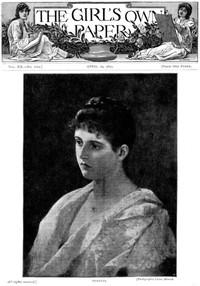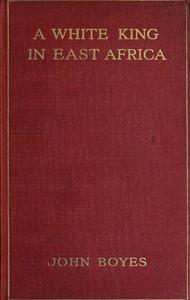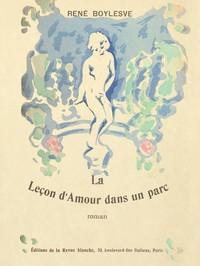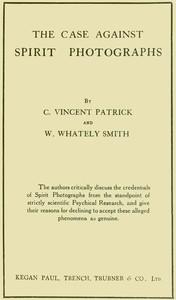Read this ebook for free! No credit card needed, absolutely nothing to pay.
Words: 15226 in 3 pages
This is an ebook sharing website. You can read the uploaded ebooks for free here. No credit cards needed, nothing to pay. If you want to own a digital copy of the ebook, or want to read offline with your favorite ebook-reader, then you can choose to buy and download the ebook.


: The Girl's Own Paper Vol. XX. No. 1009 April 29 1899 by Various - Children's literature Periodicals The Girls Own Paper
Preface 9
Documents of 1636
Informatory memorial addressed to the king. Juan Grau y Monfalcon; Madrid, 1637 55
Documents of 1637
Bibliographical Data 365
PREFACE The principal topics treated in this volume are the commerce of the Philippine Islands and the punishment inflicted by Corcuera on the Moro pirates of Mindanao. The former is fully discussed by Juan Grau y Monfalc?n, procurator of Filipinas at the Spanish court; the latter is related in various documents, written mainly by participants in the Mindanao campaign. Certain minor documents relate to the administration of the islands and to the religious orders there.
A letter from Corcuera gives a brief account of the great ecclesiastical controversy of that year; we present it here, not so much for the new information contained in it as for its being evidently the direct expression of the governor's own opinions, and not dictated more or less by other persons. Corcuera says that "the friars are lawless people, and he would rather fight the Dutch in Flandes than deal with them." He asks that the king will adjust these matters, or else send another governor to the islands, so that one of them may attend to ecclesiastical affairs and the other to temporal. Part of Cerezo's letter of August 10, 1634, to the king is answered by the latter in his despatches to Corcuera; it relates to military affairs--approving Cerezo's action, and giving some directions to Corcuera.
A royal decree of August 14, 1636, commands the municipality of Manila to reimburse their procurator-general, Juan Grau y Monfalc?n, for the time and money that he has spent in attending to their business at the Spanish court. Another document of this sort gives Corcuera orders regarding certain matters which his predecessor Cerezo had laid before the Spanish government. A third document approves the proceedings of Pedro de Heredia as governor of Terrenate, and promises re?nforcements for the Spanish fort there.
The procurator describes this commerce, both domestic and foreign. Under the former head he enumerates the chief products of the islands, the diverse peoples who inhabit them, and the number of Indians and foreigners paying tribute to the crown and to private persons. He emphasizes the importance of the central location of the islands, and the restraint and hindrance that they constitute to the schemes of the Dutch for gaining control of the Oriental trade. Considering next the foreign trade of Filipinas, he represents it as far the most valuable part of that commerce, and gives a historical sketch of Oriental trade in general, with an enumeration of the commodities and products obtained therein, and much valuable information regarding the origin, quality, and prices of many goods. He relates how the Dutch were driven from Maluco, but afterward regained much of the spice region, notwithstanding the efforts of the Philippine Spaniards to prevent this. A list of the Dutch forts and factories in the archipelago is presented. From these data the procurator draws forcible arguments for the retention and support of the Philippine colony by the crown. This is fully justified by the importance of the clove trade, which otherwise would be lost to Spain; and by that of the Chinese trade, of which Filipinas enjoys the greater part. The maintenance of the Philippines will result in preserving the missionary conquests in the Far East, securing the safety of India, depriving the Dutch of their trade, relieving the expenses needed to preserve the American Spanish colonies, and maintaining the prestige of the Spanish crown. The royal treasury alone cannot meet all the expenses of the islands, nor is it wise to allow them too much commerce with Nueva Espa?a; the king is therefore advised to combine these two methods of relief. For his guidance in this matter, valuable information is submitted by the procurator, regarding the expenses of maintaining and governing the Philippines , the revenues of the colonial treasury, and the real nature of the deficit therein. He claims that the islands contribute more than what they cost, since they have to bear the great expenses of maintaining and defending Maluco against the Dutch , and aid all public needs with their time, property, and lives, as volunteers--thus saving to the crown an enormous expense. The procurator asks that these services be duly rewarded by the crown, and recommends that for this purpose the magistracies in the islands be kept for rewarding such worthy citizens, and not sold, as heretofore, at auction. But chiefly he urges the importance to them of the trade with Nueva Espa?a which is chiefly based on that which Manila carries on with China and India. Efforts have been made in Spain to suppress the former commerce, as being detrimental to that of Spain and the Indias. He admits that this last is decreasing, but claims that Filipinas is not responsible therefor. The causes of that decline are, rather, the greatly lessened yield of the precious metals in America, the enormous decrease of the Indian population in the colonies, the smaller consumption of goods among the Spaniards therein, and the exorbitant imposts and duties levied on the merchants. To deprive Filipinas of its commerce would be a measure both unjust and useless. The writer briefly reviews the history of that commerce, which at present is in a declining and feeble condition, owing to the many restrictions that have been laid upon it; and discusses certain misrepresentations that are current regarding supposed violations of the royal ordinances in the trade of Filipinas and Peru. Some of these acts are greatly exaggerated, and others, being inevitable in all trade, must be overlooked. Several instances are cited to show that even in Sevilla violations of the royal ordinances are taken for granted, and sometimes condoned even when discovered; and the procurator urges that the Filipinas be not more severely treated than other parts of the royal domain. He admits that their cargoes, like those from other colonies, contain some unregistered goods; but declares that the amount of this has been greatly exaggerated, for which he adduces various arguments. He also explains that the products of the islands themselves go to Nueva Espa?a outside of the amount permitted, which has been incorrectly represented. He again presents for consideration the additional two per cent duty imposed on Philippine shipments, and with forcible arguments urges that it be abolished. The procurator even declares that the commerce of Filipinas pays higher duties than does any other, and that the citizens of Manila have lost in it more than they have gained--in proof of which he submits a list of shipwrecks, wars and military expeditions, insurrections, conflagrations, and other occasions of loss and damage since the foundation of Manila. He then enumerates the goods sent to Nueva Espa?a from Filipinas, which are necessary to the former country for supplying the needs of its people; compares these goods with those sent from Spain; and discusses the effect of this Chinese merchandise on the Spanish silks. The memorial closes with a brief summary of the considerations and arguments therein contained, and a request for leniency in the imposition of duties on goods from Filipinas.
During the summer and autumn of 1636, a Mindanao chief named Tagal harries the coasts of Cuyo and Calamianes. Returning homeward laden with booty and captives, these pirates are attacked by a hastily-gathered Spanish force of ships and men, and in this battle Tagal and many of his followers are slain, and most of their plunder recovered. This victory is a great gain to the Spaniards in maintaining their stand against the hostile Moros, and many of the latter are rendered submissive for the time being. An account of these events is given in a letter unsigned and undated, but evidently written early in 1637, and probably by the Jesuit Pedro Gutierrez.
The Moro raids of 1636 arouse the Spaniards to the urgent necessity of subduing those fierce and treacherous pirates; and Corcuera organizes an expedition to Mindanao, led by himself, for their punishment. Several accounts of this campaign are presented--largely from Jesuit sources, since members of that order accompany the governor, and it is their missions which are most endangered by the hostility of the Moros in Mindanao.
One of these is a letter from the celebrated martyr in the Japanese missions, Marcelo Francisco Mastrilli, who went to Mindanao with Corcuera. He relates with much detail the events of the expedition, which the devil strives from the start to hinder. The Spaniards capture the Moro forts at the mouth of the Rio Grande, killing several of Corralat's best officers, and seizing many vessels and military supplies; then they destroy many villages belonging to him. On March 18, the Spaniards storm a fortified height back of the port where they first entered. Corralat is driven from it, and flees to a little village in his territory; and in the conflict his wife and many of his followers are slain. Some Recollect fathers, held captive by the Moros, also perish--one of them slain by them, in anger at their defeat. Corralat's treasure is seized, and divided among the soldiers; and much booty obtained by the Moros in plundering the churches in their raids is recovered. After destroying all that can be found, Corcuera returns to Zamboanga, leaving troops behind to subdue another Moro ruler, named Moncay. The wounded Spaniards--many of whom were injured by poisoned arrows--are cared for at Zamboanga, so successfully that only two men out of eighty die, and these "because they would not let themselves be cured." Mastrilli ascribes this success not so much to the antidotes that had been furnished from Manila as to the virtues of a relic that he had, of St. Francis Xavier, and to the patients' faith therein. In due time, the detachment sent against Moncay return, bringing that chief's brother as envoy to offer his submission, and a promise to aid the Spaniards against Corralat, and to receive among his people Jesuit missionaries. Corcuera returns to Manila, after sending an expedition to reduce the villages on the western coast of the island, and arranging for opening a mission on the island of Basilan and securing for its people the protection of the Spanish fort at Zamboanga. Other Moros along the southern coast offer to become the vassals of Spain, and the Joloans hasten to secure peace with the conqueror. All this opens a broad field for gospel work, and Mastrilli urges that Jesuit missionaries hasten to till it.
Free books android app tbrJar TBR JAR Read Free books online gutenberg
More posts by @FreeBooks

: A White King in East Africa The Remarkable Adventures of John Boyes Trader and Soldier of Fortune Who Became King of the Savage Wa-Kikuyu by Boyes John Bulpett C W L Editor - Kikuyu (African people); Africa East


: Measure Your Mind: The Mentimeter and How to Use It by Stockbridge Frank Parker Trabue Marion Rex - Intelligence tests; Psychological tests; Educational tests and measurements





